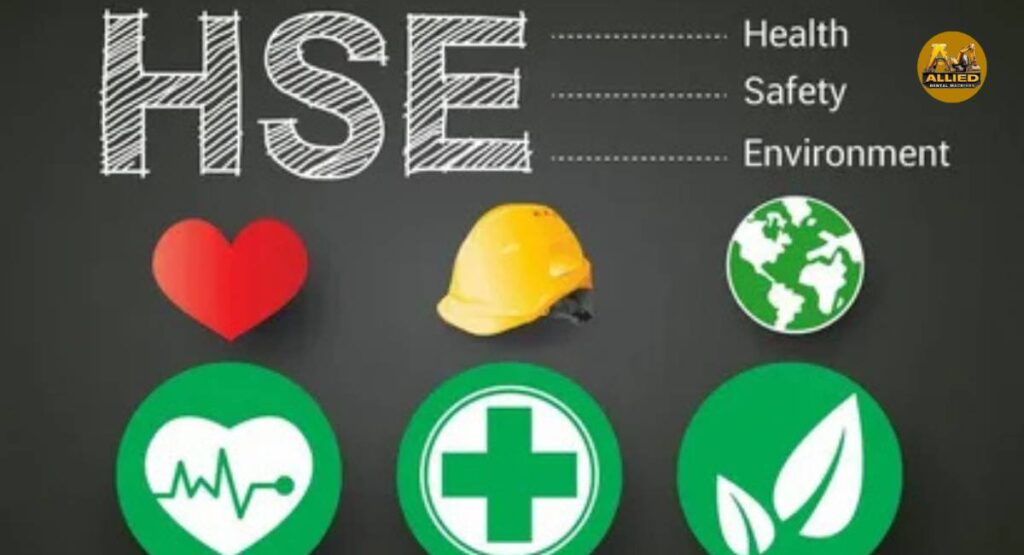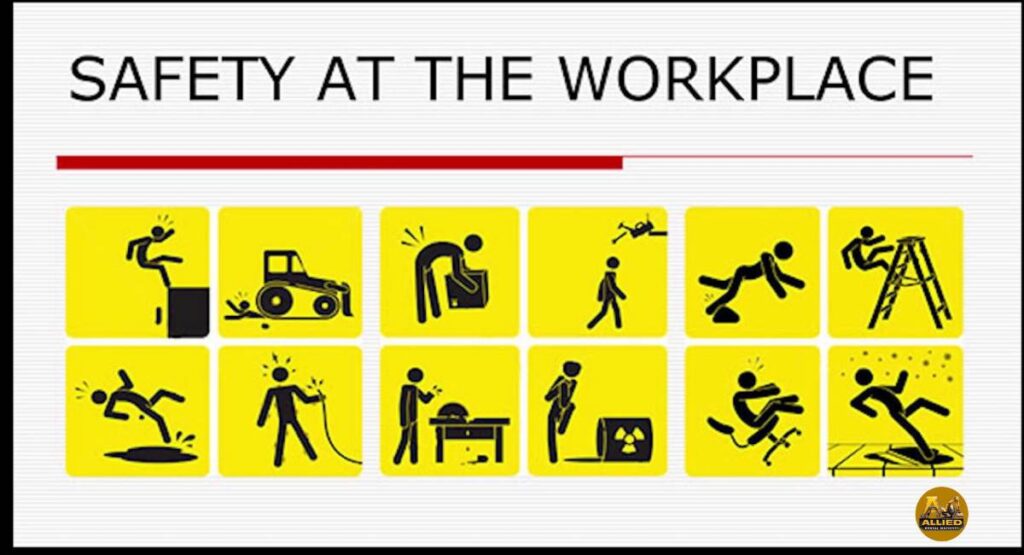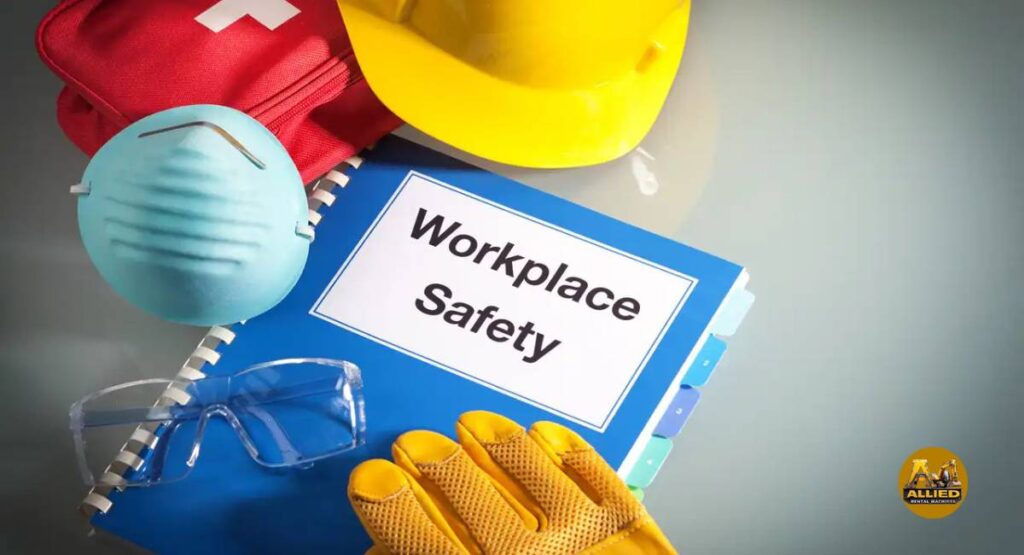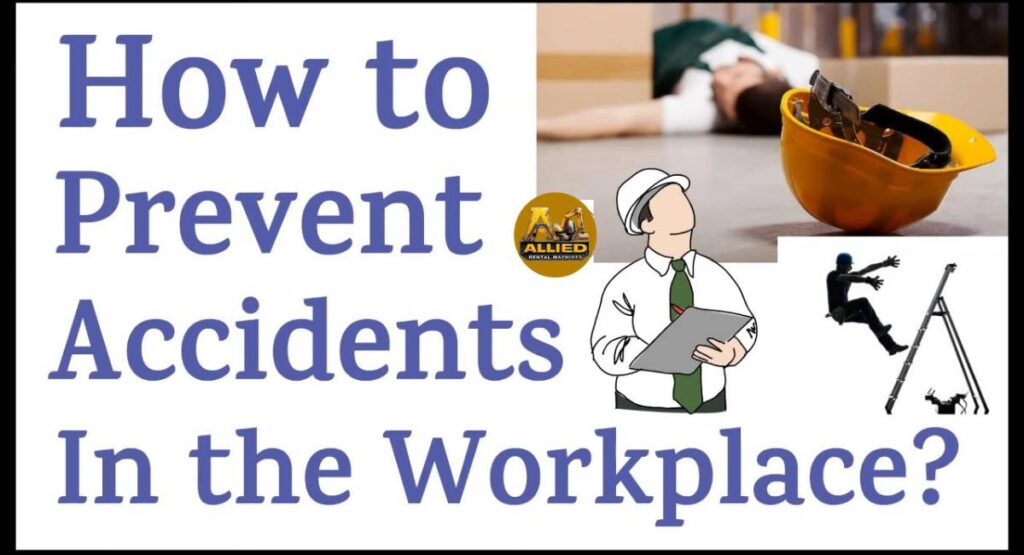
Why Health and Safety Is Important to Your Business
Imagine this: One small slip on an oily floor, a minor short-circuit, or a poorly stacked shelf, and suddenly your business is facing not just an injured employee—but legal battles, insurance claims, operational halts, and damaged reputation. It’s not just a hypothetical. These are daily realities for many businesses that overlook safety in workplace as a strategic priority.

Health and safety are not just compliance checkboxes—they’re a backbone of a responsible, resilient business. When your workforce feels protected, they’re more confident, engaged, and loyal. When safety protocols are embedded into your operations, your business becomes future-proof. Accidents cost. Prevention pays.
In fact, according to the National Safety Council, workplace injuries cost U.S. businesses over $167 billion annually. This includes medical expenses, lost productivity, legal fees, and compensation.
Benefits of Prioritizing Safety in Business
- Enhanced employee morale: Workers feel valued and secure.
- Better productivity: Safe environments reduce distractions and delays.
- Lower turnover: Safety fosters trust, which boosts retention.
- Reduced legal risk: Compliance with OSHA and labor laws keeps penalties at bay.
- Improved brand image: Consumers and partners trust ethical, safety-conscious brands.
Simply put, businesses that invest in safety are businesses that thrive.
Why Is It Important?
The importance of workplace safety cannot be overstated. It’s not just about protecting individuals—it’s about safeguarding a company’s foundation.
Let’s break it down:
Human Lives Are at Stake
Workplaces, whether in construction, manufacturing, or even an office, present hazards. The Bureau of Labor Statistics reported over 5,000 fatal work injuries in the U.S. in 2022. Behind every number is a family, a life, a loss.
Legal and Ethical Responsibilities
Every employer is bound by the Occupational Safety and Health Administration (OSHA) standards. Ignoring safety measures can lead to lawsuits, shutdowns, and fines that tarnish a business’s credibility.
Financial Ramifications
Direct and indirect costs of accidents—medical bills, replacement labor, retraining, lawsuits—are staggering. Insurance premiums also spike after claims.
Operational Continuity
Accidents halt workflows. Whether it’s a minor injury or major catastrophe, disruptions affect production timelines, customer satisfaction, and profitability.
Culture and Employee Loyalty
A proactive safety culture shows employees they matter. When they feel safe, they perform better, stay longer, and advocate for the business.
5 Things You Can Do to Improve Health and Safety in Your Workplace

Improving safety isn’t a one-time project—it’s a continuous commitment.
1. Conduct Regular Risk Assessments
- Identify hazards in every department.
- Evaluate who might be harmed and how.
- Determine control measures to mitigate risks.
- Schedule routine checks to update safety measures.
2. Create a Clear Safety Policy
A documented safety policy outlines roles, responsibilities, and procedures. It keeps everyone on the same page—from leadership to interns.
3. Foster Open Communication
Encourage employees to report hazards or near misses without fear. Create anonymous reporting systems and reward proactive behavior.
4. Implement Safety Drills and Emergency Protocols
Run mock drills for fire, chemical spills, and equipment failures. Familiarity reduces panic and improves response time during real incidents.
5. Regularly Update Training and Equipment
Outdated equipment or stale training invites accidents. Invest in modern tools, PPE, and workshops tailored to your industry needs.
Awareness Courses
Training is the bedrock of workplace safety. Awareness courses educate employees on what to look for, how to act, and why it matters.
Types of Awareness Courses:
- General Safety Awareness: Covers hazard identification and basic safety practices.
- Fire Safety: Teaches fire prevention, extinguisher use, and evacuation procedures.
- Ergonomics: Reduces risk of repetitive strain and posture-related injuries.
- Hazard Communication: Informs about handling chemicals and reading safety data sheets.
Partner with certified trainers or platforms like OSHA’s Outreach Training Program to ensure standardized learning.
Managing Safely
“Managing Safely” is not just for safety officers—it’s for every manager.
When team leads understand safety’s business impact, they can model and enforce the right behaviors. Managing safely means:
- Conducting daily safety checks
- Resolving hazards immediately
- Empowering employees to speak up
- Aligning KPIs with safety performance
It bridges leadership and workforce accountability.
Leading Safely
Leaders set the tone for organizational behavior. A CEO who wears PPE on-site sends a louder message than any memo.
Core Principles of Leading Safely:
- Visibility: Be present in safety talks, audits, and assessments.
- Consistency: Make safety a part of every business conversation.
- Inspiration: Celebrate safety successes and recognize contributors.
A leader’s attitude toward safety in workplace can transform it from an obligation into a cultural norm.
Managing Sustainably
Safety and sustainability are two sides of the same coin.
A sustainably managed workplace:
- Minimizes environmental risks (e.g., waste spills, emissions)
- Reduces health hazards through eco-friendly materials
- Enhances long-term wellbeing through ergonomic and wellness programs
Sustainable safety is about creating environments where workers and the planet can thrive together.
5 Steps to Understand and Improve Workplace Safety

- Observe Daily Operations
- Watch how employees interact with tools, spaces, and one another.
- Listen to Feedback
- Conduct surveys and interviews. Workers know risks best.
- Analyze Data
- Track near misses, incident reports, and inspection logs.
- Review Policies
- Compare existing protocols with industry best practices.
- Implement & Iterate
- Roll out improvements, gather feedback, and continuously refine.
5 Reasons Why Safety is Important in the Workplace
- Saves Lives
Preventing accidents means protecting people from serious harm or death. - Boosts Morale
Workers feel respected and cared for, improving motivation and retention. - Enhances Productivity
Safe environments are smoother, more efficient, and free from disruptions. - Lowers Costs
Fewer injuries mean reduced insurance, legal, and training costs. - Ensures Compliance
Following OSHA rules protects businesses from fines and penalties.
Increase Productivity of Employees

Safety and productivity are tightly linked. When employees don’t fear injury, they focus better.
- Reduced absenteeism due to injuries
- Improved efficiency through safe, streamlined processes
- Higher engagement due to better morale
Case in point: A study by Liberty Mutual found that every $1 invested in safety yields a $4 return in improved productivity and reduced costs.
Lower Probability of Workplace Accidents

Workplace accidents don’t just “happen”—they result from overlooked signals.
- Safety protocols help identify and fix unsafe practices.
- Proper signage and instructions reduce human error.
- Regular maintenance and inspections prevent mechanical failures.
When prevention becomes policy, accidents decline.
Workplace Safety Reduces Cost and Inconvenience
From delays in delivery schedules to retraining new staff, the hidden costs of injuries add up.
A safe workplace ensures:
- Stable workflows
- Lower insurance premiums
- Less time spent managing claims or investigations
It’s an investment, not an expense.
📊 Estimated Annual Costs of Workplace Accidents in the U.S.
| Category | Estimated Annual Cost (USD Billions) |
| Lost Productivity Due to Injuries | $50.0 |
| Medical Expenses | $35.0 |
| Administrative Expenses | $20.0 |
| Employer Costs for Workers’ Compensation | $25.0 |
| Damage to Equipment/Property | $15.0 |
| Legal Expenses | $22.0 |
Employees’ Safety Is Required by Law
Failing to provide a safe environment is a violation of federal law. OSHA mandates that employers maintain conditions that do not pose serious harm or danger.
Penalties for non-compliance can reach $156,259 per violation as of 2024. But beyond fines, violations damage employer credibility and employee trust.
Ways to Create a Safe Work Environment

Understanding and Detecting Workplace Issues
- Use safety audits to spot patterns.
- Interview teams to uncover near-misses.
- Watch for physical and behavioral indicators of stress or fatigue.
Promote a Culture of Safety by Encouraging Harmony
- Recognize and reward safe behavior.
- Facilitate open forums for feedback.
- Bridge departments to collaborate on shared safety goals.
Make Sure Employees Receive the Necessary Safety Training
- Offer initial and refresher courses.
- Adapt training to roles (office vs. field).
- Make resources accessible (handbooks, videos, QR-coded manuals).
Inform About Dangerous Work Environments
- Use digital signage and alerts.
- Post up-to-date hazard maps.
- Include warnings in daily briefings and handouts.
How Can Technology Help Ensure Workplace Safety?
- IoT Sensors: Detect gas leaks, overheating equipment, or human falls.
- Wearables: Monitor vital signs and fatigue levels of workers.
- AI-powered Analytics: Predict risks by analyzing trends in incident data.
- Mobile Apps: Enable real-time reporting of hazards and checks.
Tech makes safety proactive, not reactive.
Conclusion
Safety in workplace isn’t optional—it’s a strategic imperative. It impacts people, profits, and the planet. Whether you’re a startup or a Fortune 500, making safety a daily conversation changes everything.
A safe workplace is a productive, respected, and sustainable workplace. Don’t wait for an accident to happen. Act today.
👉 What’s your workplace doing to promote safety? Drop your thoughts below or explore our guide to OSHA-compliant safety practices.
FAQ Section
Q #1: Why is safety important in the workplace?
Because it protects employees, reduces costs, increases morale, and ensures legal compliance—all of which are vital for business success.
Q #2: What is safety and its importance?
Safety refers to minimizing risks of injury or harm. Its importance lies in safeguarding human life, improving productivity, and ensuring legal and ethical business conduct.
Q #3: Why is safety more important?
Safety is foundational. Without it, other business goals—like growth or innovation—are unsustainable. A safe workforce is the key to long-term success.
Q #4: Why are safety needs important?
They fulfill a basic human requirement for security. Employees who feel safe are more engaged, loyal, and effective.
Q #5: How can safety improve productivity?
It reduces absenteeism, avoids disruptions, and builds trust—allowing employees to focus fully on their tasks.
Q #6: What is the basic need safety?
It’s the assurance that one won’t face harm while working. It’s essential for physical well-being and peace of mind.
